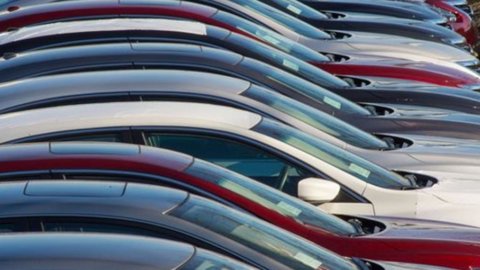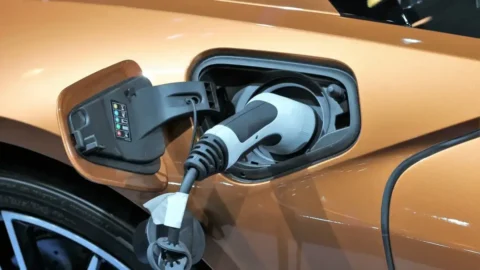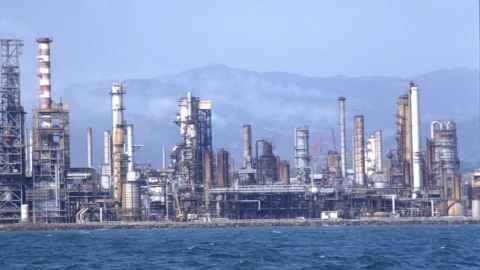Italy occupies the 11th place in the world among exporters of cars and bodywork, with a share, respectively, of 3 and 2% (while Germany holds 21 and 17%), and 19th for electrical equipment for the sector. At the same time, our country occupies the 9th place in the world for exports of other components, where 4 out of 100 products are Made in Italy while 16 are German. And it is precisely in the components that the national productions of the sector have the greatest potential: despite the good positioning, in fact, the destinations are not those where the most vehicles are produced, nor those with the largest car fleet. For Made in Italy, it is more necessary than ever to strengthen its positioning in North America, from Canada to Mexico, with attention to President Trump's intentions regarding the NAFTA free trade agreement, entering the vehicle assembly chain.
Cars and components: to grow you need to conquer the right market
In the last ten years, component exports have remained concentrated in Europe, while Italy's position has deteriorated precisely in those markets with the greatest growth potential: the USA, China, Canada, Chile, Mexico and Vietnam.

The automotive sector is growing globally with positive effects on Italian exports, especially on advanced markets and on some particularly developed emerging markets. However, as reported in the last SACE focus, however, Italy remains the continental European market with the most significant deficit in terms of domestic production of motor vehicles: in 2015 the difference between units registered and produced exceeded 700 cars. I sign that export capacity therefore remains limited, even taking into account the supranational structure of the sector and the importance of continental networks for the production and purchase of motor vehicles. Germany, which in turn produces in many countries, leads with 6 million cars produced in its territory and 3,2 million cars purchased, while in Italy, compared to almost 1,6 million cars sold in 2015, those produced did not exceed one million (990 thousand). A level well below the French competitors (nearly two million cars), the Spanish (2,7 million) and the Czechs (1 million and 200 thousand).
In the meantime, in fact, the geography of car manufacturing has changed: if ten years ago Europe was the first car manufacturer with 3 out of 10 cars and almost 6 out of 10 were produced between the EU and North America, in 2015 Made in the EU narrowed to 2 out of 10 cars (4 out of 10 with the USA) while more than one out of 5 cars is built in China. Therefore, the demand for vehicles and components should guide the internationalization choices of Italian companies, already freed in many cases from the models of the past. And the variety of countries that follow compared to the USA and Germany for imports in the sector indicates that there are a plurality of geographies in which the Italian presence can find space.
From 2006 to 2016 Italy was confirmed as a net importer of passenger cars and a net exporter of parts and components (and motorcycles). However, both a lower import, which fell from 30,4 billion euros to 24,5 billion, and the increase in exports from 13,5 billion to almost 20 billion have an impact on the trade balance of vehicles. And if motor vehicle exports are more diversified today than ten years ago, the export of components remains concentrated on the European markets (in particular Germany, France, United Kingdom, Spain), which maintain a share of more than 70% of the total, while it decreases substantially towards some areas of more recent investment (Mexico, Turkey) and reshapes, on emerging ones (good in Brazil and India, bad in China). In this scenario, Made in Italy remains a net exporter of components to Germany, Spain, Turkey, Poland, the Czech Republic and Brazil, while over the last ten years, Italy's position has deteriorated in terms of trade balance precisely in those markets with the greatest growth potential: USA, China, Canada, Chile, Mexico and Vietnam as well as some Middle Eastern and African countries.
Here then, globally, SACE's forecasts on future sales of motor vehicle parts show very sustained dynamics in several emerging countries, including many Asians, those markets that today demand the most and can be the destination of internationalization choices with the right risk protection tools. We must not forget that the values are very different between the countries considered: they range from 252 million euros in Russia to 451 billion in China. Even a low growth rate, when applied to a very high value, therefore represents a significant opportunity. According to analysts, the largest sales expected will be in China (over 20 billion euros), Mexico (16 billion) and India (almost 14 billion). Furthermore, several ASEAN countries present good opportunities, an area in strong evolution, with interesting demographics and with millions of citizens who are seeing their purchasing power grow. In particular, the presence of international competitors, the physical distance and the small size of the exporting companies require a more structured approach which cannot ignore the implementation of a well-defined and articulated strategy, the identification of a reliable partner in Italy and abroad and the endowment of sufficient financing to complete the investment.




